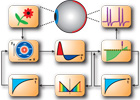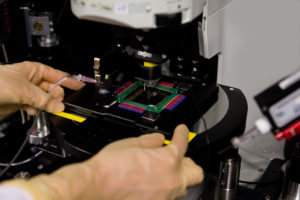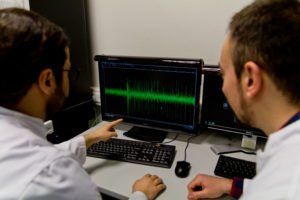Vision
Our visual perception relies on sophisticated computations that are solved by our nervous system. We are usually unaware of the complexity of these computational challenges; they often only become apparent when the visual system is defective or — less severely — when it is fooled by a visual illusion. Among these challenges are: accounting for varying illumination conditions, identifying objects, detecting motion signals, and coping with eye movements.
The Retina
Solving these tasks begins in the retina, an intricate network of nerve cells at the back of the eye. On one side of the retina, light is taken up by specialized receptor cells, photoreceptors. On the other side, the output neurons of the retina, the retinal ganglion cells, send out patterns of precisely timed electrical pulses (“action potentials” or “spikes”) to transmit the retinal signals to the brain. In between the photoreceptors and ganglion cells, a network of different types of nerve cells processes the information in the incoming light patterns and extracts relevant visual signals.
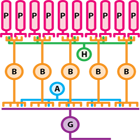
Neural Coding and Neural Circuits
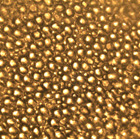
Connecting Experiments and Theory
To study the neural code of the retina and its circuit mechanisms, we combine electrophysiological experiments and analyses of mathematical retina models. In the experiments, we record the electrical activity from retinal ganglion cells and other neurons in isolated retinal tissue by using miniature electrodes while projecting different light patterns onto the photoreceptors. We use grids of hundreds or thousands of electrodes to extracellularly record the spikes from large populations of retinal ganglion cells. Furthermore, we use patch electrodes and sharp microelectrodes to record intracellularly from various retinal neurons, in particular from ganglion cells and from bipolar cells, which provide the excitatory input into ganglion cells. The experimental results are aggregated into mathematical models of retinal signal processing, which help us understand how the neuronal interactions in the retinal circuit contribute to different functions of the visual system.
